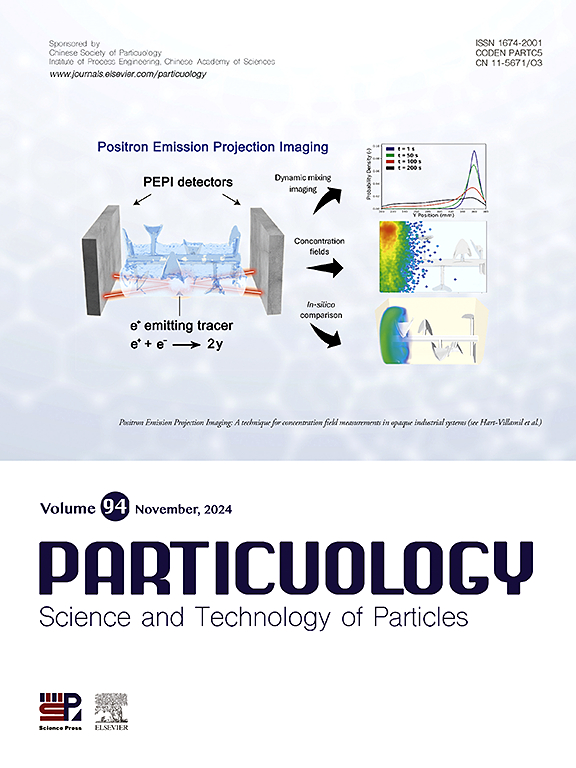Experimental study on eliminating various typical fire smokes by ultrasonic field
IF 4.1
2区 材料科学
Q2 ENGINEERING, CHEMICAL
引用次数: 0
Abstract
To explore the effectiveness of acoustic agglomeration technology in eliminating urban fire smoke, an experimental setup for eliminating continuous smoke is built. This study uses airborne ultrasonic transducers as the sound source, with resonant frequencies are 13, 16, 18, and 20 kHz, respectively. Typical urban fire smoke is produced by the combustion of materials such as polystyrene (PS), polyvinyl chloride (PVC), carton, cotton, pine sawdust, and birch sawdust. The effects of ultrasonic frequency, sound pressure level, residence time and initial concentration on the elimination of both single material smoke and mixed material smoke types are investigated. Results indicate that the 16 kHz sound waves are most effective for PS, PVC, and carton smoke, whereas the optimum frequency for birch smoke is between 16 and 18 kHz. The optimal frequency of mixed smoke is significantly influenced by particle size and the ratio of large to small particles. When the sound pressure level is 142–154 dB, and the residence time is 4 s, the visibility of all types of smoke increased from 1 m to above the safe escape threshold (2.5 m). Furthermore, higher initial concentrations of smoke result in more effective elimination.

求助全文
约1分钟内获得全文
求助全文
来源期刊

Particuology
工程技术-材料科学:综合
CiteScore
6.70
自引率
2.90%
发文量
1730
审稿时长
32 days
期刊介绍:
The word ‘particuology’ was coined to parallel the discipline for the science and technology of particles.
Particuology is an interdisciplinary journal that publishes frontier research articles and critical reviews on the discovery, formulation and engineering of particulate materials, processes and systems. It especially welcomes contributions utilising advanced theoretical, modelling and measurement methods to enable the discovery and creation of new particulate materials, and the manufacturing of functional particulate-based products, such as sensors.
Papers are handled by Thematic Editors who oversee contributions from specific subject fields. These fields are classified into: Particle Synthesis and Modification; Particle Characterization and Measurement; Granular Systems and Bulk Solids Technology; Fluidization and Particle-Fluid Systems; Aerosols; and Applications of Particle Technology.
Key topics concerning the creation and processing of particulates include:
-Modelling and simulation of particle formation, collective behaviour of particles and systems for particle production over a broad spectrum of length scales
-Mining of experimental data for particle synthesis and surface properties to facilitate the creation of new materials and processes
-Particle design and preparation including controlled response and sensing functionalities in formation, delivery systems and biological systems, etc.
-Experimental and computational methods for visualization and analysis of particulate system.
These topics are broadly relevant to the production of materials, pharmaceuticals and food, and to the conversion of energy resources to fuels and protection of the environment.
 求助内容:
求助内容: 应助结果提醒方式:
应助结果提醒方式:


